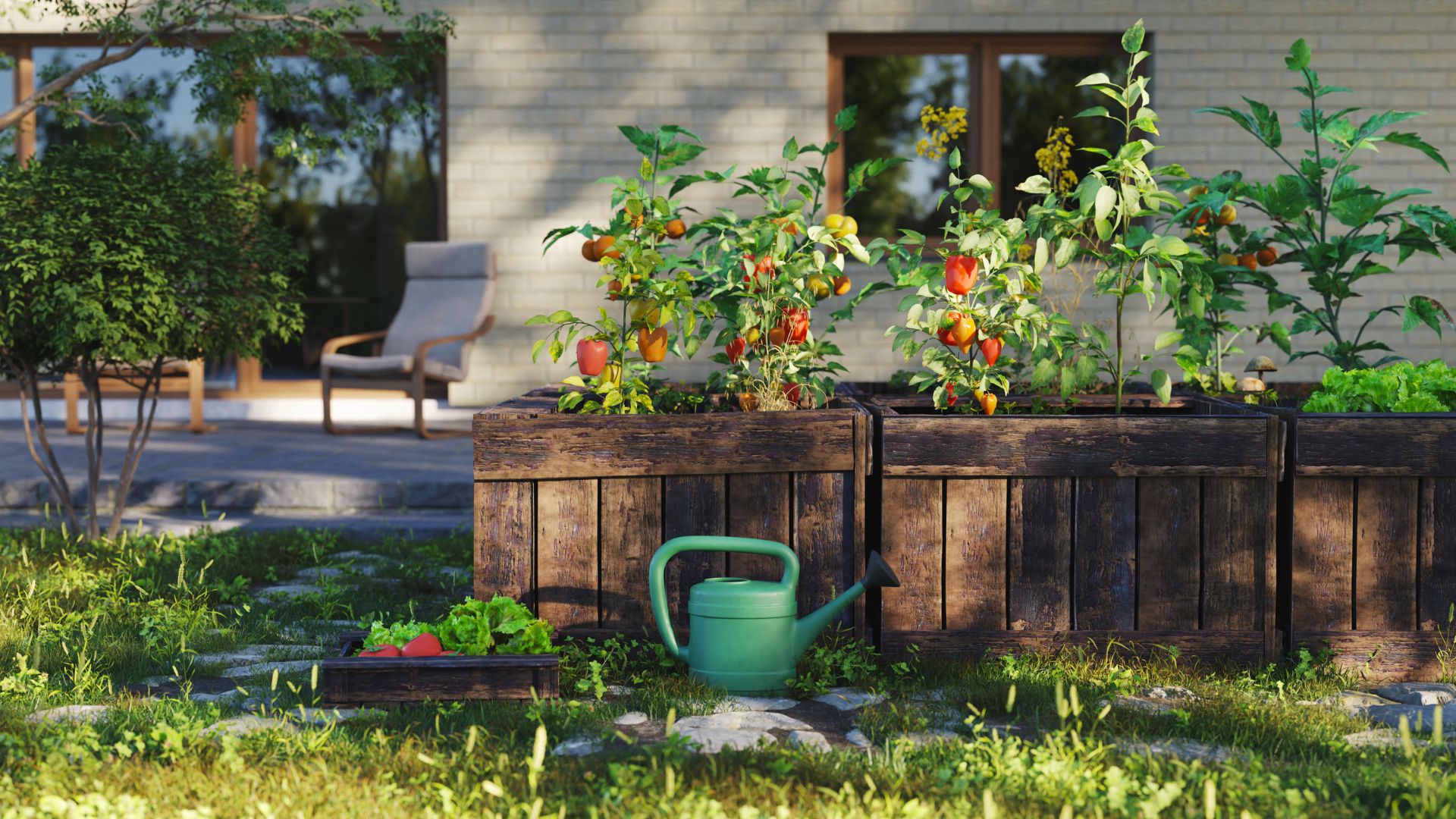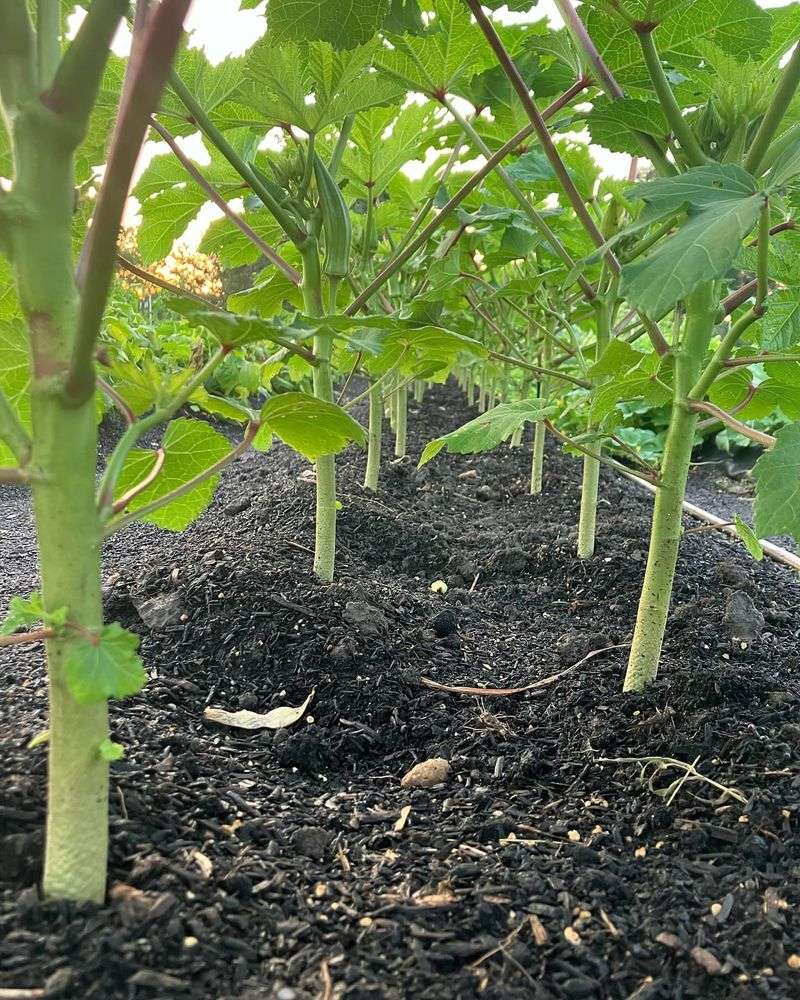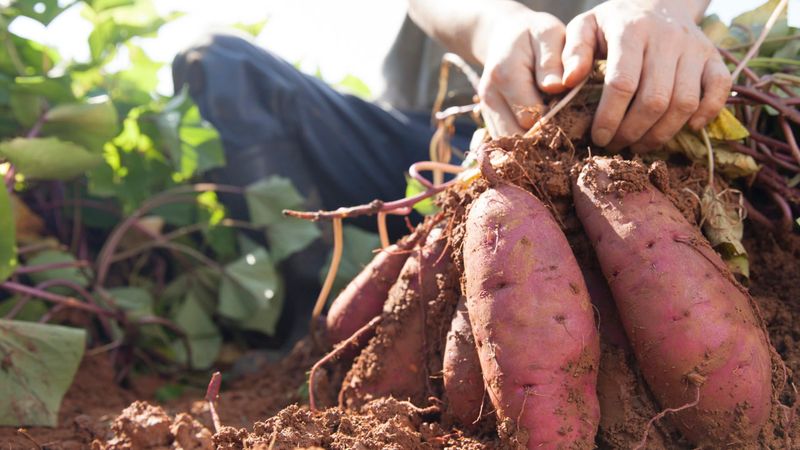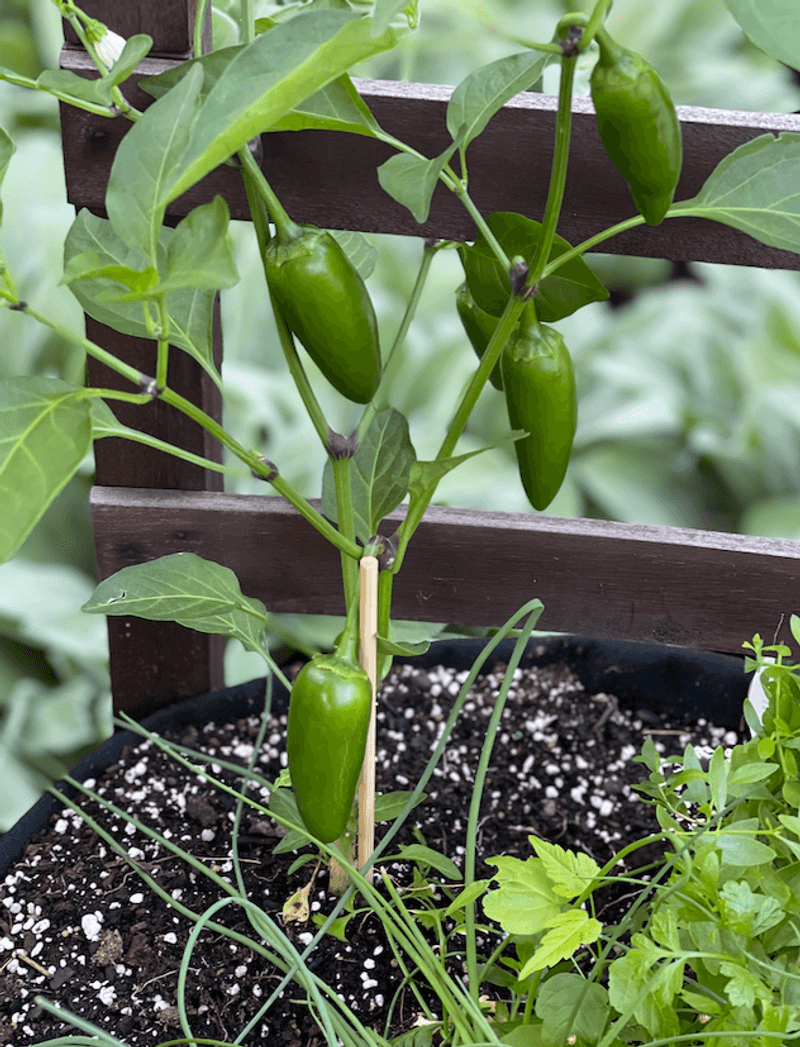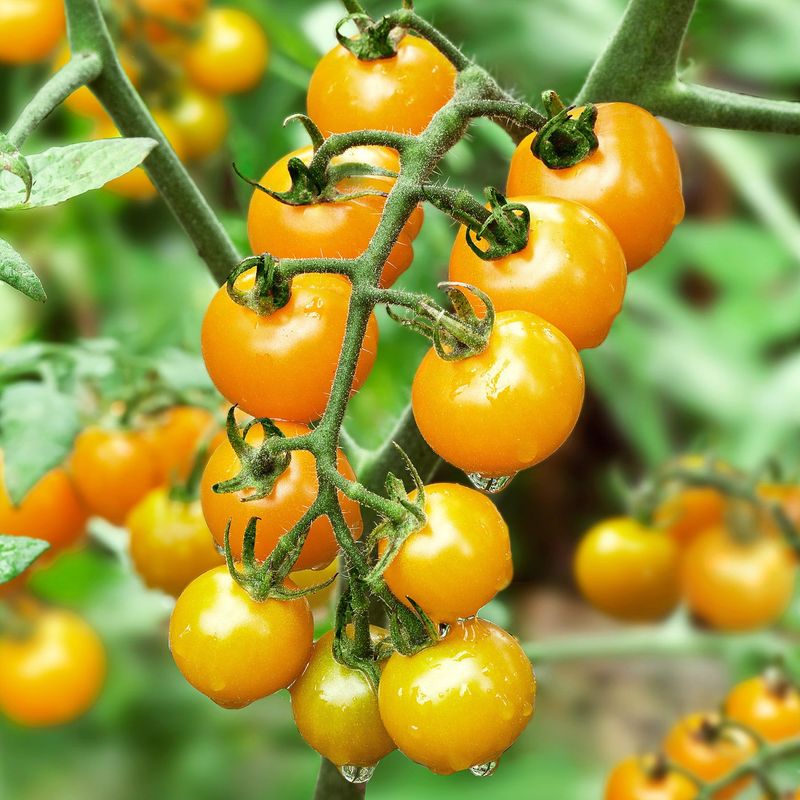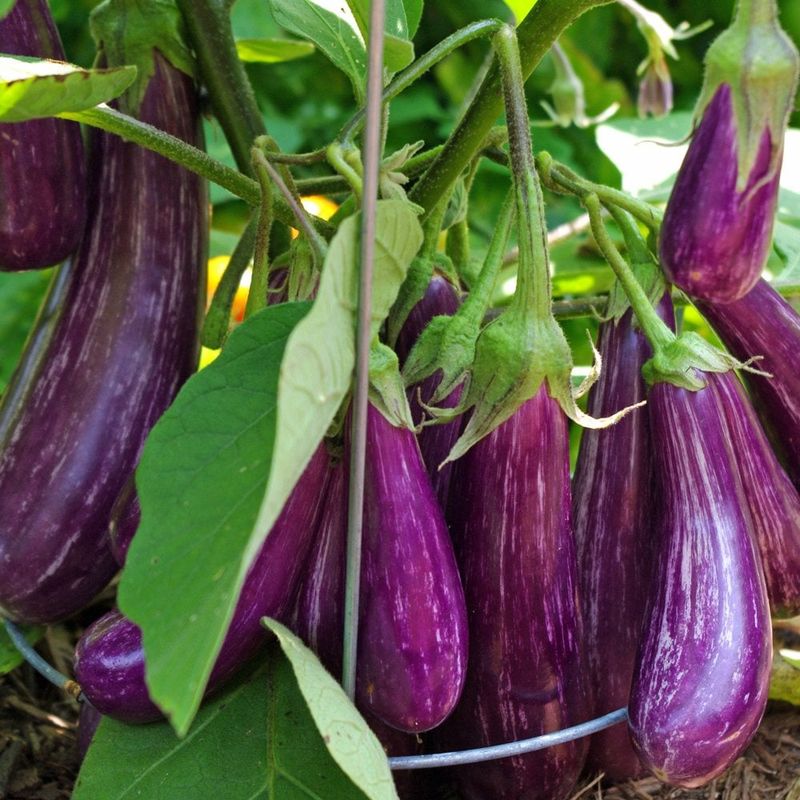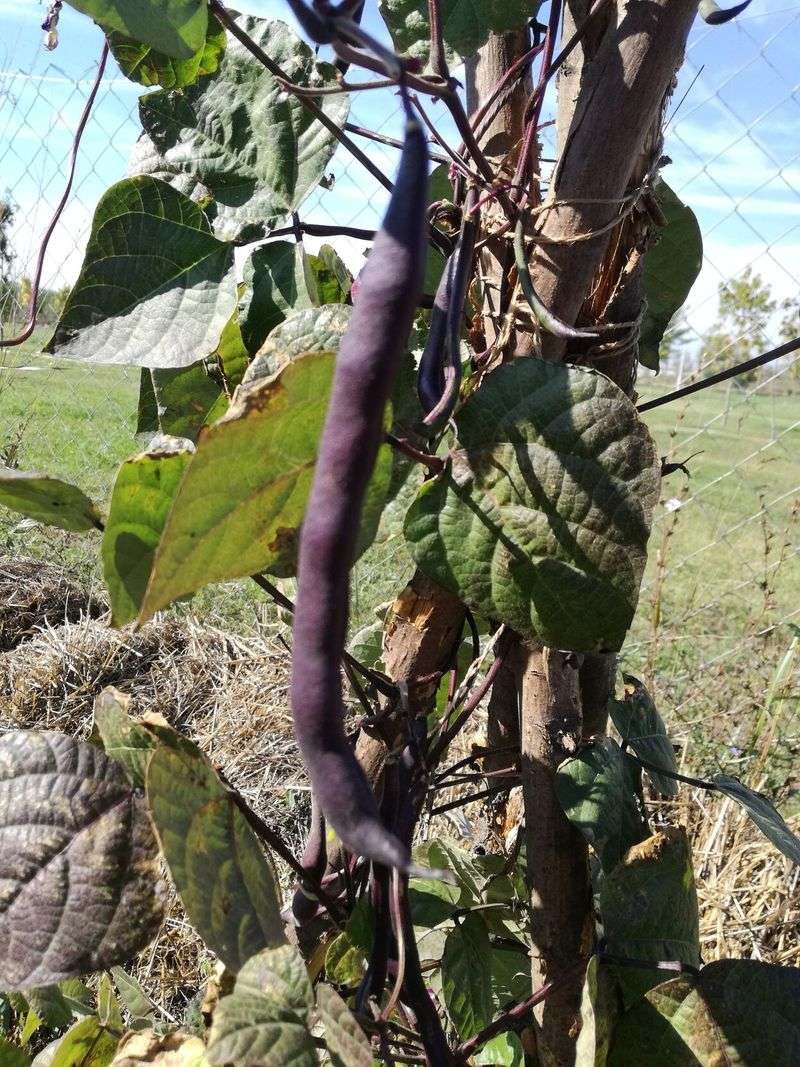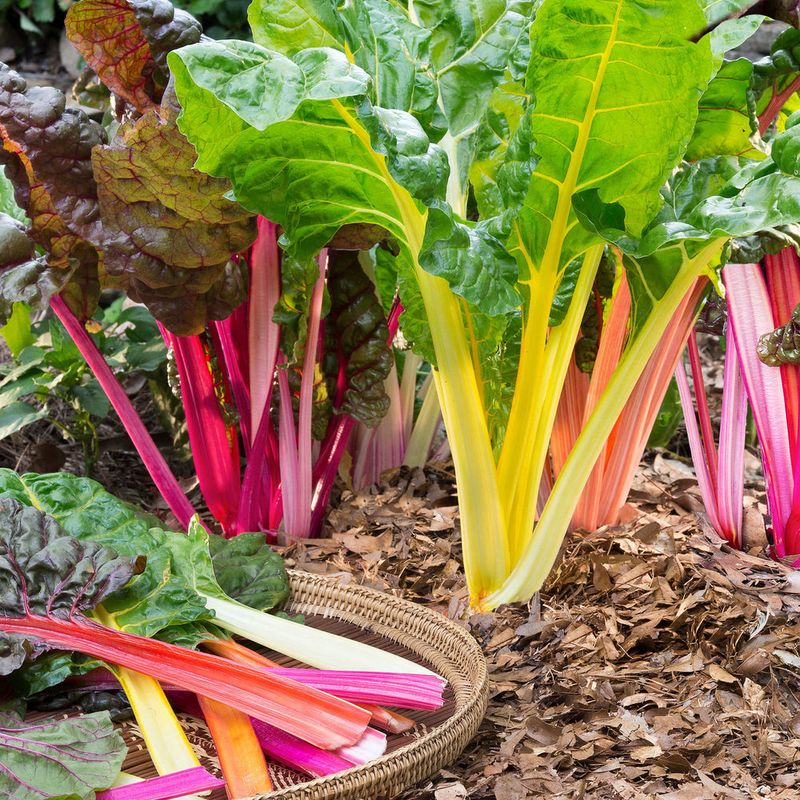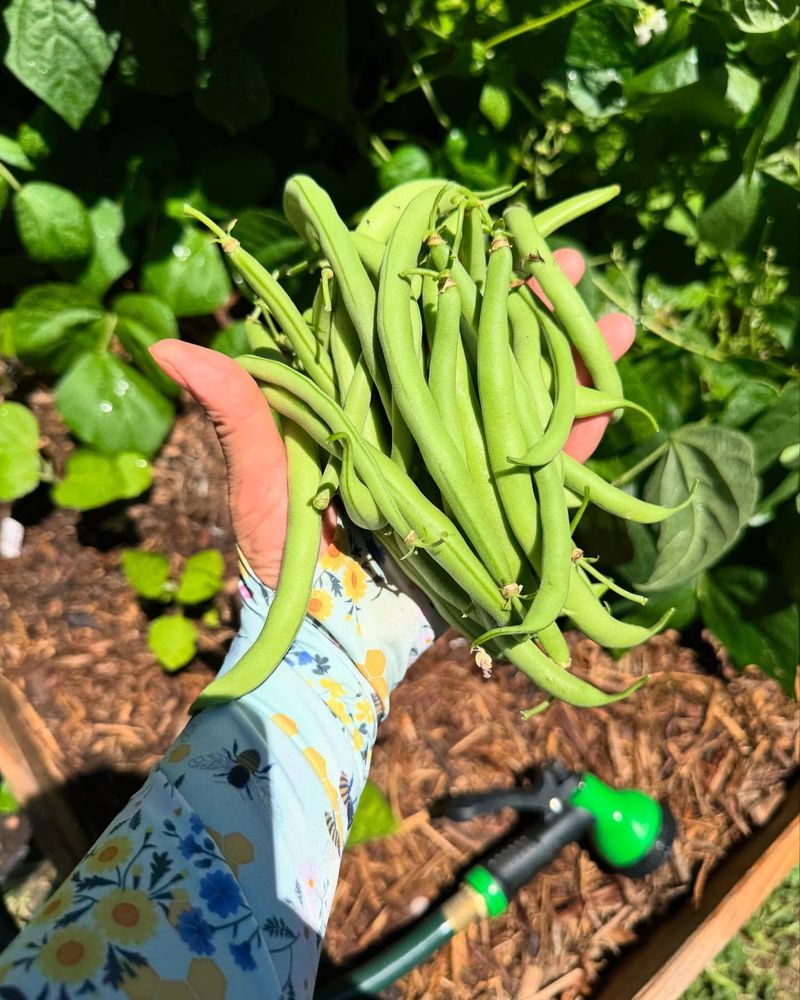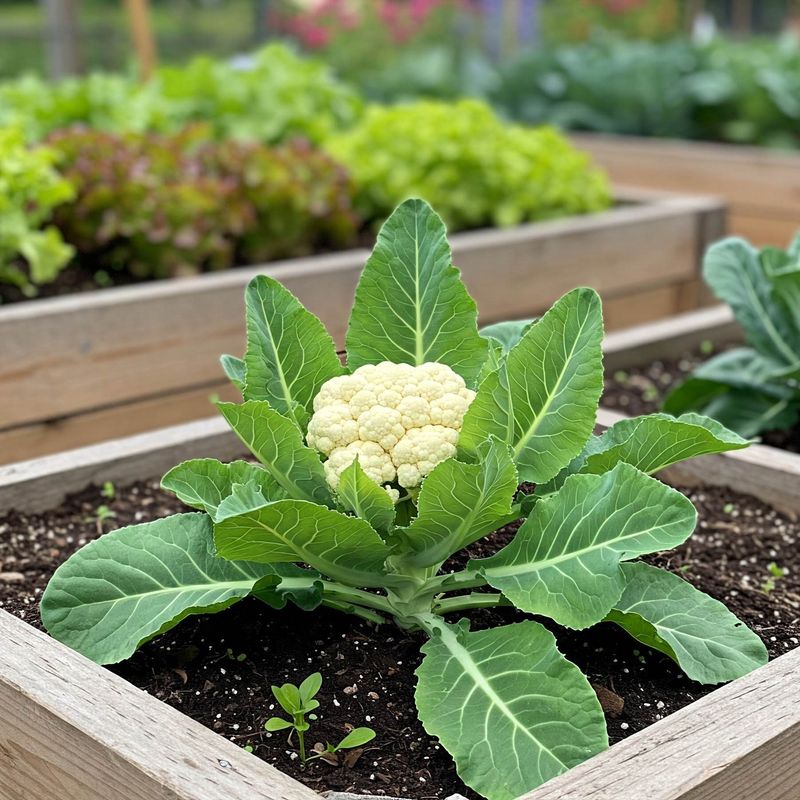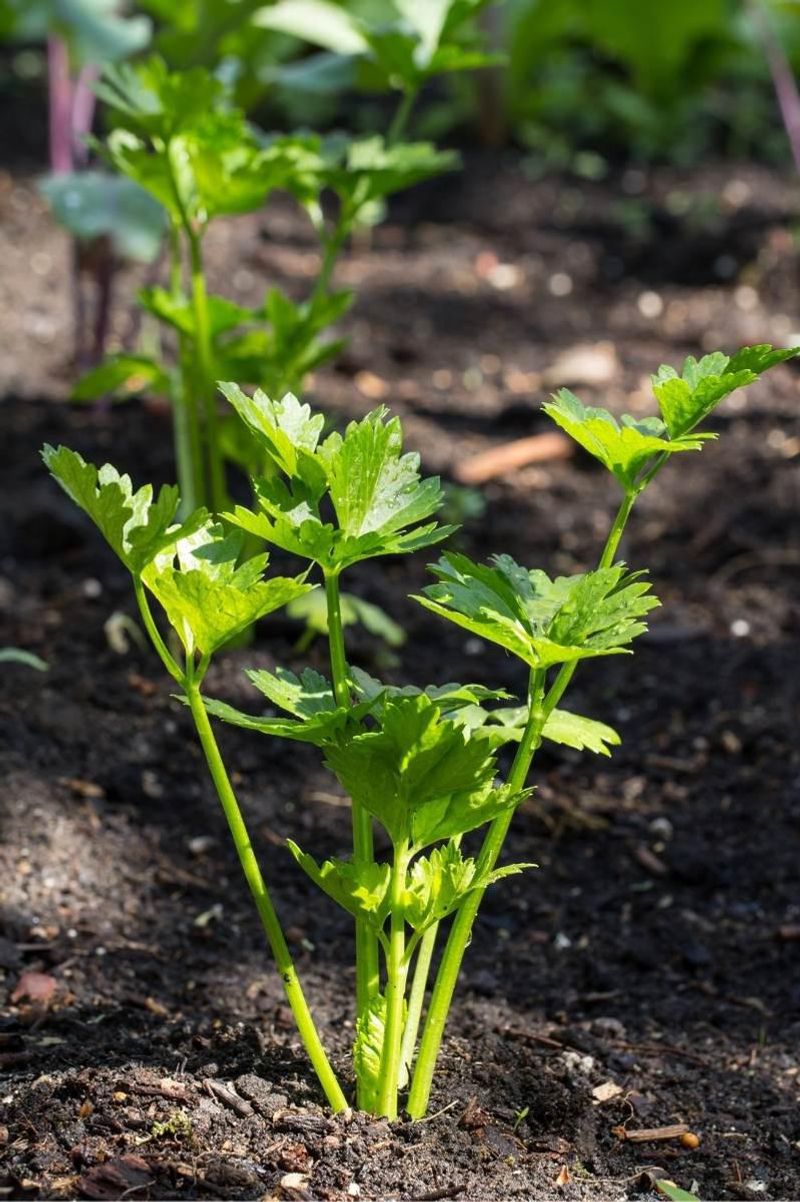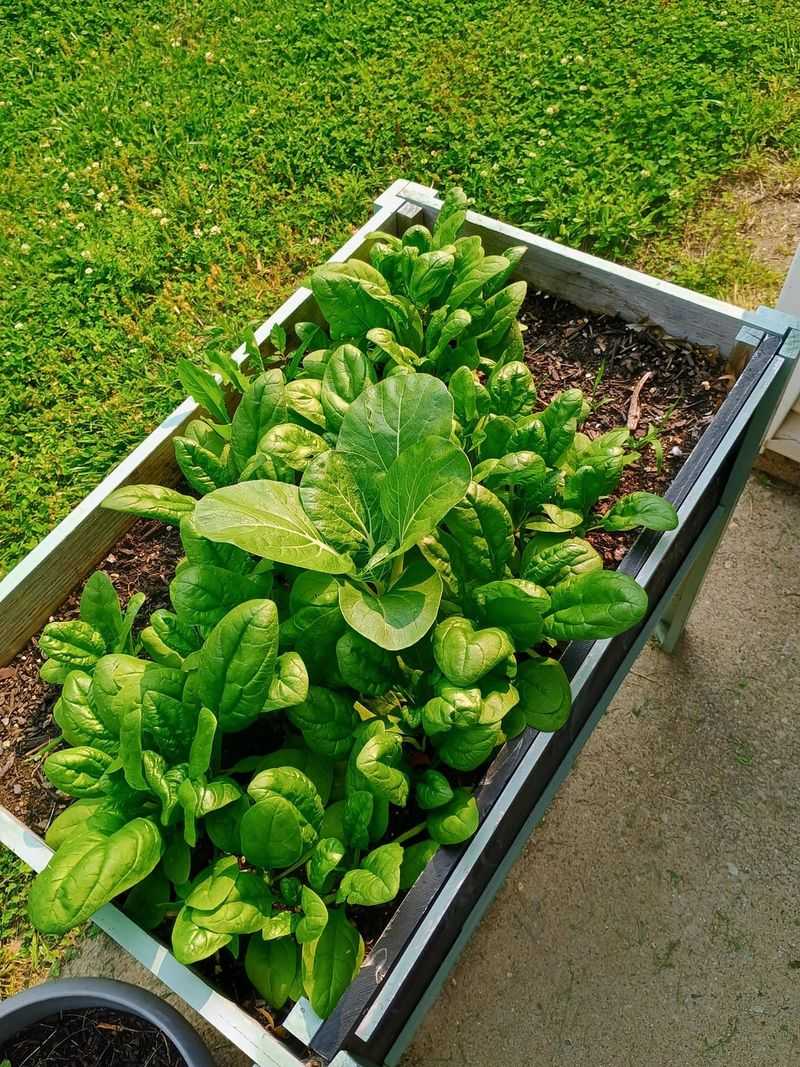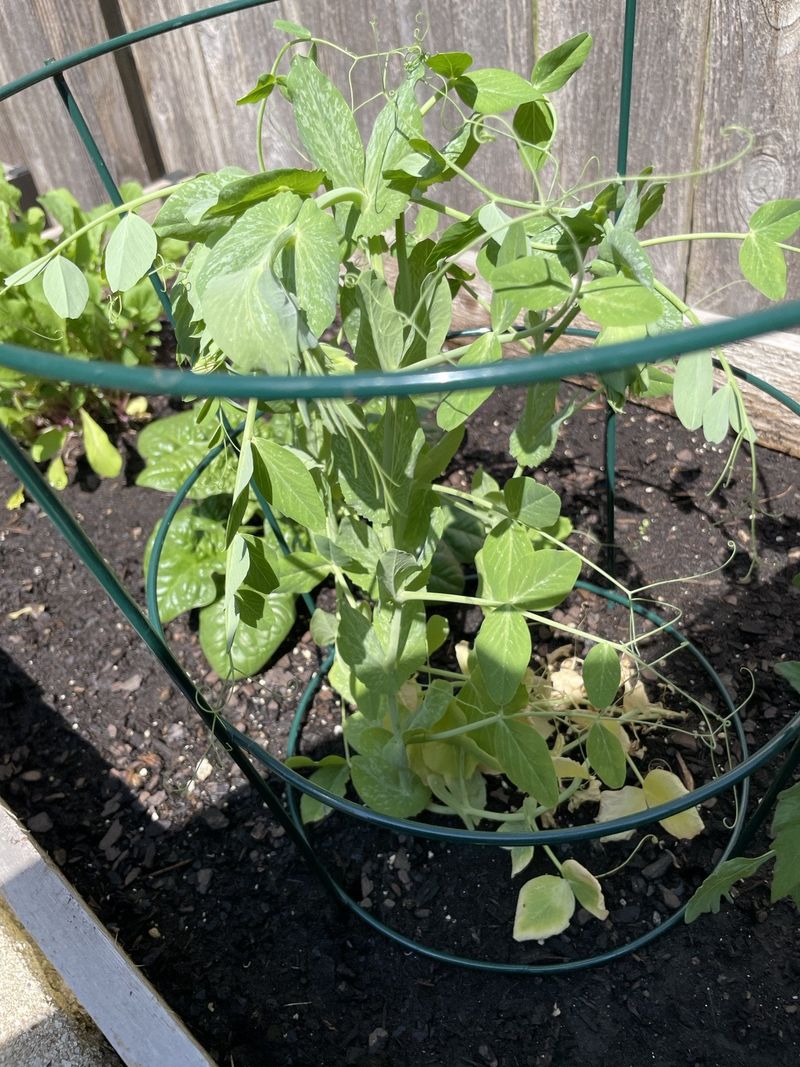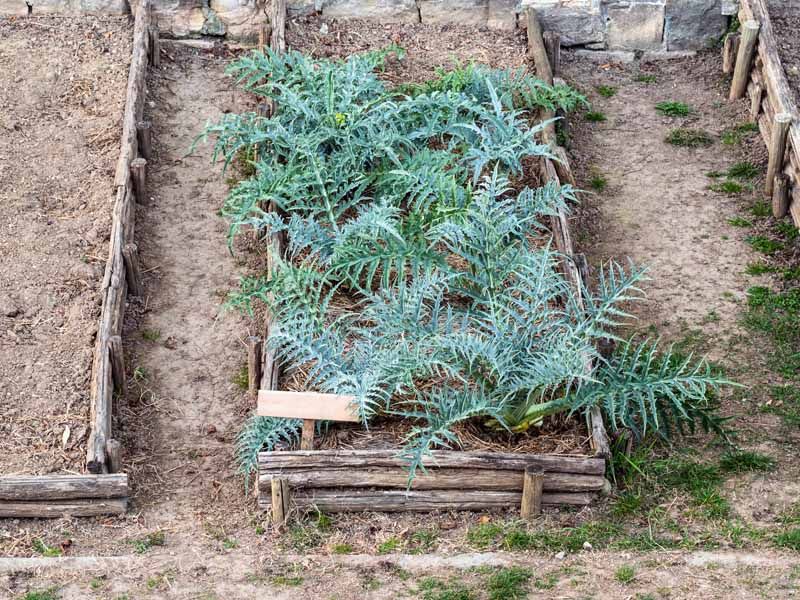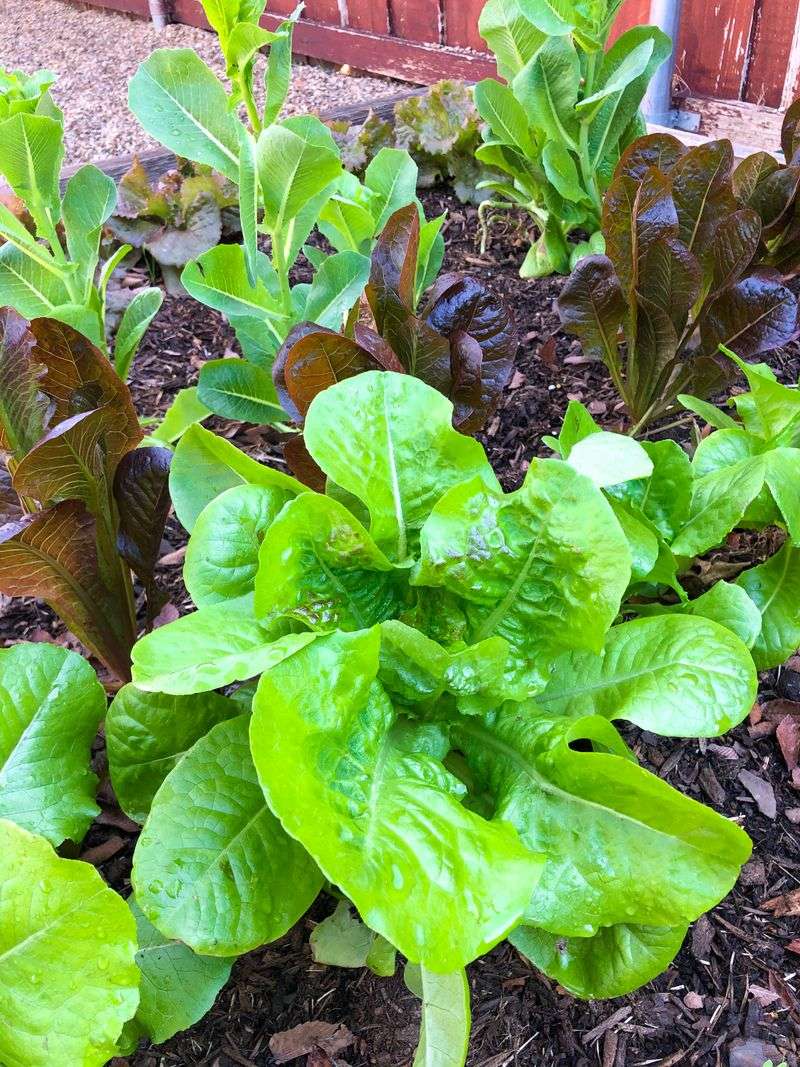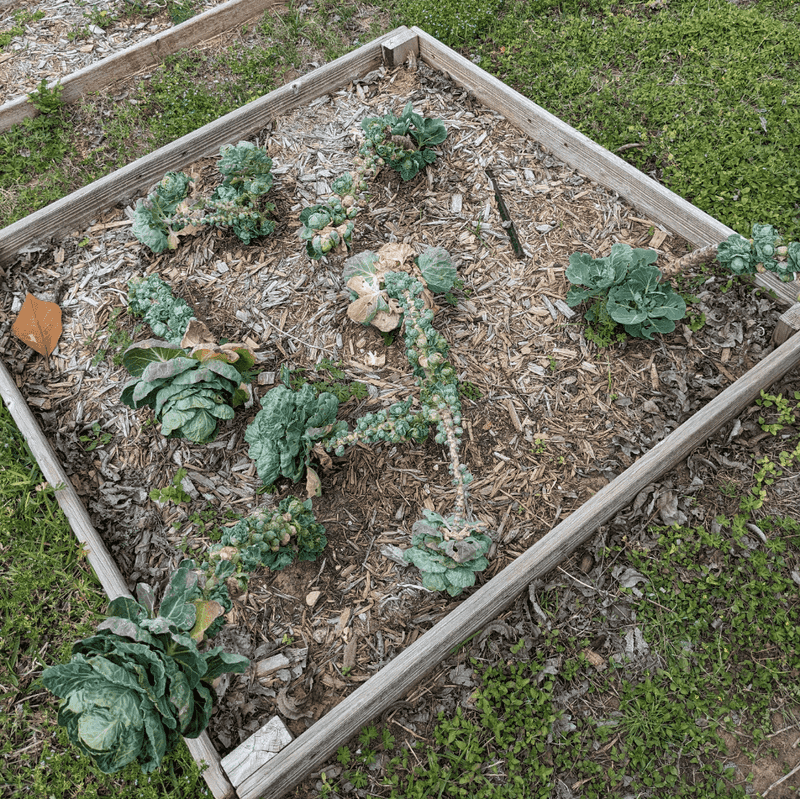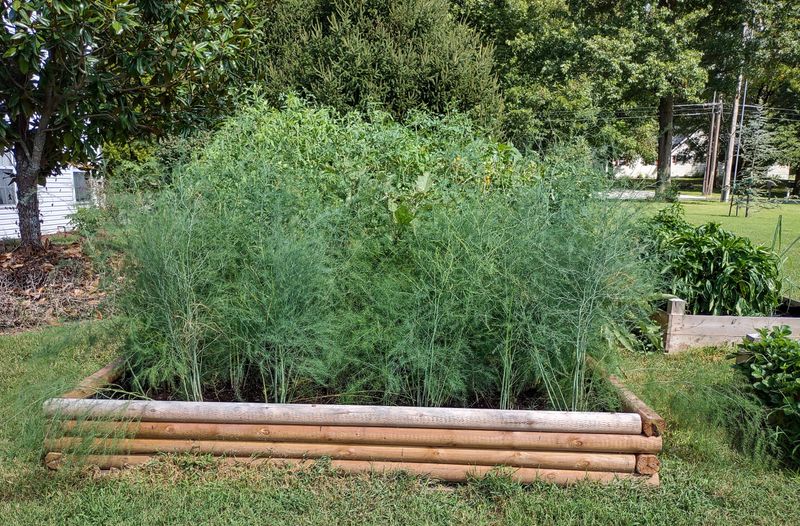Gardening in Texas means embracing the heat—and learning to work with it, not against it. Raised beds are a lifesaver, giving better drainage and letting you tailor the soil. But success really comes down to picking veggies that can handle the heat.
After years in Central Texas, I’ve found clear winners like okra, peppers, sweet potatoes, and black-eyed peas. They don’t just survive—they flourish when the sun’s blazing. On the flip side, crops like lettuce or broccoli tend to wilt in summer’s grip.
Knowing what to plant—and when—makes all the difference. With the right lineup, your raised beds will thrive through triple-digit temps, turning challenges into a season full of fresh, homegrown flavor.
1. Okra Loves The Texas Heat
Growing taller by the day once temperatures climb above 85°F, okra actually celebrates our hottest months. The more sun beating down, the happier these plants seem to be in raised beds where soil warms quickly.
Water deeply once or twice weekly rather than daily sprinkling. The well-draining soil in raised beds prevents the root rot that sometimes affects okra in traditional gardens.
Harvest pods when they’re 3-4 inches long for best flavor and texture. Left too long, they become woody and tough – a mistake I’ve made more times than I care to admit!
2. Sweet Potatoes Thrive When Others Wilt
Planted in late spring, sweet potatoes develop extensive root systems that help them access moisture even during droughts. Their sprawling vines create natural shade for the soil, reducing water loss in raised beds.
Their deep orange flesh packs more nutrition than regular potatoes, making them worth the 3-4 month growing commitment. I’ve harvested sweet potatoes well into October from my Austin garden.
Minimal pest problems make these vegetables nearly foolproof for Texas gardeners. Even better, they don’t mind our alkaline soils that challenge so many other crops.
3. Peppers Produce All Summer Long
Both sweet and hot varieties keep producing through triple-digit temperatures when many plants have given up. The excellent drainage of raised beds prevents the root diseases that sometimes plague peppers in heavy clay soils.
Start harvesting when fruits reach full size and desired color. My jalapeños and bell peppers typically begin producing by June and continue until fall’s first frost.
Provide afternoon shade during August’s most brutal heat for even better results. A simple shade cloth extending from the west side can make the difference between survival and exceptional production.
4. Cherry Tomatoes Keep Going When Larger Types Fail
Smaller varieties like Sweet 100 and Yellow Pear produce prolifically even as temperatures climb. Their fruit sets more reliably during heat than their larger beefsteak cousins that struggle with Texas summers.
The controlled environment of raised beds allows for perfect soil composition that tomatoes love. Adding extra compost and organic matter creates the ideal growing medium for these heavy feeders.
Mulch heavily to maintain consistent soil moisture. Last year my cherry tomatoes continued producing into November after starting in April – that’s seven months of fresh tomatoes from one planting!
5. Eggplant Handles Humidity Like A Champ
Thriving when temperatures stay consistently above 70°F, eggplants are perfectly suited for our long growing season. Their ability to produce through summer’s humidity makes them standout performers in raised beds.
The smaller varieties like Fairy Tale and Hansel mature quickly and keep producing steadily. I’ve found these more reliable than the larger Italian types in my Dallas garden.
Space plants at least 18 inches apart to ensure good air circulation. This simple step helps prevent the fungal issues that sometimes develop during our most humid periods.
6. Southern Peas Laugh At Drought
Black-eyed peas, cream peas, and crowder peas actually prefer our hot, dry conditions. Their nitrogen-fixing abilities even improve soil quality for future plantings in your raised beds.
Minimal irrigation needs make these perfect for water-conscious Texas gardeners. I’ve seen these thrive with just weekly watering even during July heat waves.
Plant after soil warms to at least 65°F for best germination. Direct sowing works perfectly in raised beds where soil temperatures rise earlier in spring than in-ground gardens.
7. Swiss Chard Offers Year-Round Greens
Unlike most leafy greens, Swiss chard tolerates impressive heat while continuing to produce nutritious leaves. The Bright Lights variety adds beautiful color to both garden and plate with its rainbow stems.
Harvest outer leaves regularly while leaving the center intact for continuous production. This cut-and-come-again approach has given me fresh greens even during August when lettuce is just a distant memory.
Partial afternoon shade extends production during peak summer. A simple strategy of planting on the east side of taller vegetables creates natural protection from harsh afternoon sun.
8. Bush Beans Deliver Quick Harvests
Fast-maturing bush beans can complete their growing cycle before summer’s worst heat arrives. Plant successive crops every 2-3 weeks for continuous harvests through spring and early summer.
The controlled soil conditions in raised beds prevent the root diseases that sometimes affect beans in heavy clay. My Houston garden produces reliable bean harvests when planted in March and again in September.
Choose heat-tolerant varieties like Contender or Derby for best results. These varieties have consistently outperformed others in my raised beds, providing heavy yields before summer’s intensity shuts them down.
9. Cauliflower Struggles With Temperature Swings
Despite my best efforts, cauliflower has repeatedly disappointed in my raised beds. Texas’ unpredictable temperature fluctuations cause plants to button (form tiny, premature heads) or bolt before forming proper heads.
Raised beds warm quickly during winter warm spells, triggering flowering rather than head formation. I’ve tried multiple planting dates and varieties with limited success in my San Antonio garden.
The higher soil temperatures in raised beds seem particularly problematic for this cool-weather crop. Traditional in-ground gardens provide more temperature stability for finicky brassicas like cauliflower.
10. Celery Demands More Water Than Texas Can Give
Requiring consistent moisture and cool temperatures, celery quickly becomes bitter and stringy in raised beds. The faster-draining soil that benefits many vegetables works against this water-loving crop.
Even with regular irrigation, summer heat causes celery to bolt before developing decent stalks. I’ve tried growing it three seasons with disappointing results each time.
The 120+ day growing period exposes plants to inevitable temperature extremes. Our unpredictable springs mean celery planted in February might face 90-degree days by April, ruining texture and flavor.
11. Spinach Bolts At The First Hint Of Warmth
Racing to produce seeds at the slightest temperature increase, spinach rarely provides more than a few weeks of harvest in raised beds. The elevated soil temperatures speed up bolting even more than in-ground gardens.
While spring crops are possible with early planting, the window is frustratingly short. My Austin garden typically gets only 3-4 spinach harvests before plants stretch skyward and develop bitter flavor.
Fall plantings face similar challenges with our extended warm seasons. What works in northern gardens simply can’t handle Texas conditions, especially in the warmer soil of raised beds.
12. Peas Wither When Temperatures Rise
Both snow and English peas struggle to produce before heat shuts them down. The faster soil warming in raised beds accelerates their already short Texas growing season.
Despite planting in January, my sugar snap peas rarely produce beyond April. The vines yellow and production stops once temperatures consistently exceed 75°F.
The controlled soil environment of raised beds actually works against these cool-weather lovers. While they appreciate the drainage, the quicker warming proves too much for sustained production in our climate.
13. Artichokes Need Years Texas Won’t Give
Requiring 2-3 years to reach full production potential, artichokes rarely survive our summer extremes in raised beds. The exposed soil edges allow heat to penetrate from all sides, stressing these Mediterranean perennials.
While spring production might occur, plants typically decline rapidly once summer heat arrives. I’ve attempted growing them twice with disappointing results both times.
The shallow root systems can’t access deeper cool soil in raised beds. Traditional in-ground plantings have slightly better success rates, though still challenging in most Texas regions.
14. Lettuce Turns Bitter Quickly
Spring-planted lettuce races to bolt as days lengthen and temperatures climb. The faster-warming soil in raised beds accelerates this process, often resulting in bitter leaves before plants reach full size.
Even heat-tolerant varieties like Jericho and Nevada rarely last beyond May in my Dallas garden. The elevated growing environment that drains well also heats up faster than in-ground gardens.
Fall crops offer slightly better results but still require careful timing. Plant too early and summer heat kills seedlings; plant too late and winter arrives before significant harvests.
15. Brussels Sprouts Need Cold Texas Rarely Delivers
Requiring prolonged cold periods to develop properly, Brussels sprouts rarely form decent heads in our mild winters. The raised bed environment, which stays warmer than in-ground gardens, further complicates their growth.
The long 100+ day growing season exposes plants to inevitable temperature fluctuations. My attempts in Houston have resulted in plants with few sprouts, usually loose and poorly formed.
While northern gardeners celebrate these nutritious vegetables, Texas gardeners mostly find frustration. The combination of raised beds and our climate creates nearly impossible growing conditions for quality sprouts.
16. Asparagus Suffers In Raised Bed Constraints
As a deep-rooted perennial, asparagus struggles with the limited soil depth of most raised beds. The fern-like foliage quickly browns during summer heat, weakening the crowns for future production.
Standard 12-inch beds simply don’t provide enough soil volume for proper root development. After three years of declining harvests, I removed my plants and switched to more suitable vegetables.
The elevated soil temperatures in raised beds stress these normally long-lived perennials. While possible in very deep beds with afternoon shade, most Texas gardeners find asparagus disappointing in raised bed settings.

